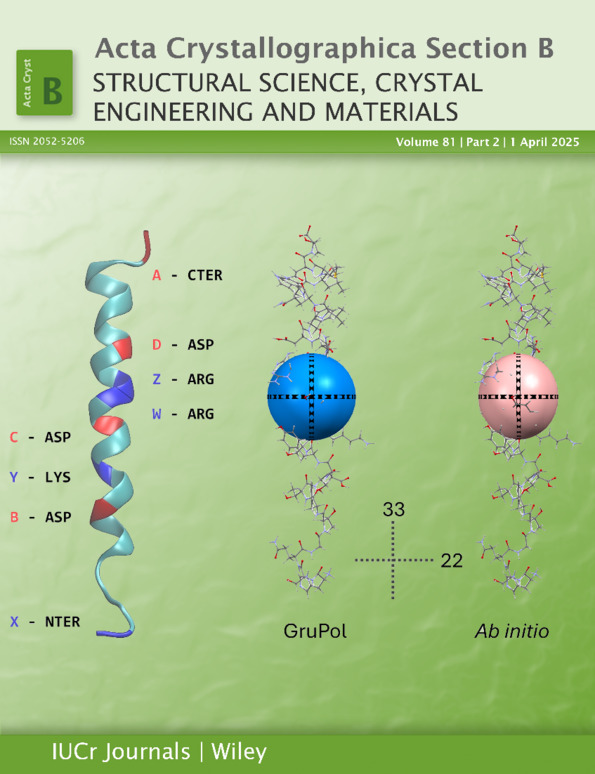Electron density and elastic properties of crystalline [Co(NH3)5NO2]ClNO3: a quantum crystallography study
Abstract
Intermolecular interactions in crystalline [Co(NH3)5NO2]ClNO3 are related to macroscopic elastic properties and photomechanical effects accompanying solid-state linkage isomerization in this compound. The electron-density features between anions and the complex cation are shown to prevent direct interaction of these fragments. The superposition of electrostatic potential and electron-density gradient fields suggests the indirect mechanism of anion interactions with each other through ligands. The non-covalent intermolecular contacts and hydrogen bonds are shown to occupy the `soft' intermolecular space forming the negative channels of quantum electronic pressure and thus can rearrange easily on anion substitution. The work rationalizes previous experimental studies of the mechanical properties of [Co(NH3)5NO2]ClNO3. The elastic properties modelled based on the structural information are in agreement with the experimental structural data. The correlation between the total and quantum pressure of separate non-covalent contacts and their quantitative analogues derived from the macroscopic elastic tensor is discussed. Conclusions on the anisotropy of mechanical properties and its link with bond continuum features are drawn.




